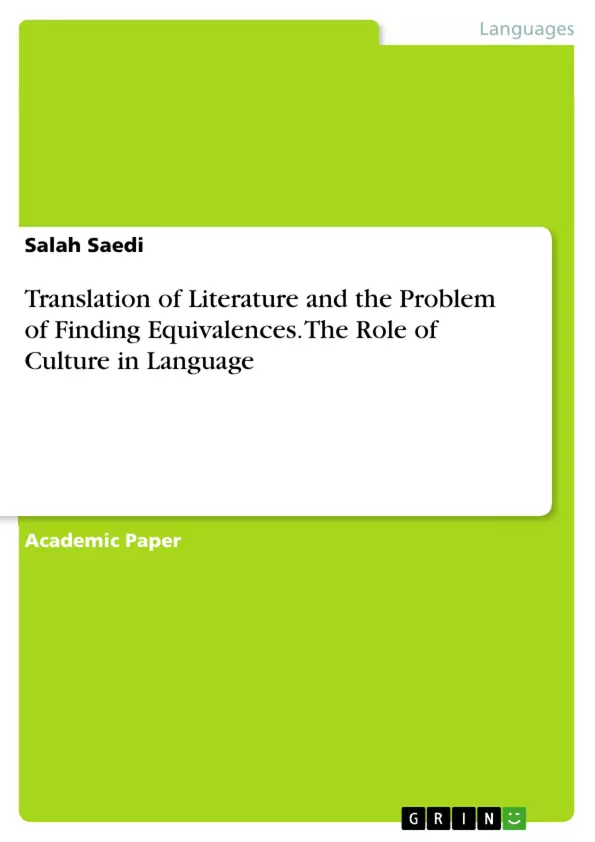The point of this examination is to research the translation strategies that prompted cultural losses and to underscore the important job of the interpreter as a cultural insider. Translating artistic is by all accounts the hardest undertaking to do, as a result of the cultural blocks which are confronting the translation procedure. Since the translation procedure is occurring between two different dialects, and as a conspicuous aftereffect of the communication between the two dialects, the translation procedure happens between the two different societies too, this is the reason the researcher have handled the exploration matter with the end goal to appear and comprehend the conceivable cultural deterrents that may the interpreter go over amid the deciphering procedure.
Translating literature is dangerous essentially on the grounds that it includes translating the allegorical or metaphorical implications of writings. There is dependably a setting in which the translation happens, dependably a history behind a content and into which a content is transported, dependably an individual (the interpreter) having a place with a specific culture and a social foundation and dependably a readership whom the interpreter has as a top priority. The analysis obviously depicts the entanglements of translation and underscores the significance of cultural mindfulness when endeavoring to communicate. This paper has a tendency to examine the cultural hindrances in literary prose works with the end goal to get to the base of these issues and attempt to locate a genuine feasible solutions to treat them.
Inhaltsverzeichnis (Table of Contents)
- INTRODUCTION
- TRANSLATION AND CULTURE
- SOLUTIONS FOR THE CULTURAL HINDRANCE IN LITERARY TRANSLATION
- Cultural hidrances and solutions in some lietrary works.....
- Strategies of translating allusions....
- Evalution of translation
- CONCLUSION
- REFERENCES..
Zielsetzung und Themenschwerpunkte (Objectives and Key Themes)
This examination aims to analyze translation strategies that lead to cultural losses in literary translation. It emphasizes the critical role of the translator as a cultural insider and delves into the challenges posed by cultural barriers during the translation process. The paper seeks to identify and understand potential cultural hurdles faced by translators and provide feasible solutions to address them.
- Cultural losses in literary translation
- The role of the translator as a cultural insider
- Strategies for translating allusions and figurative language
- Cultural considerations in translation
- The importance of cultural awareness in communication
Zusammenfassung der Kapitel (Chapter Summaries)
The introduction delves into the complexities of translating literary works, particularly the challenge of conveying allegorical and metaphorical meanings. It highlights the need for cultural understanding in preserving the source message and cultural nuances in the target text.
The "Translation and Culture" section explores the intertwined nature of language and culture, arguing that translation is not merely a linguistic transfer but a cultural bridge. It discusses the influence of cultural values and beliefs on language and the role of translation in transmitting these aspects across societies.
Schlüsselwörter (Keywords)
The main keywords and focus topics include: literary translation, cultural losses, translation strategies, cultural barriers, cultural awareness, intercultural communication, figurative language, allusions, cultural insider, translation theory, Arabic literature, etic-emic approach, translation evaluation.
- Quote paper
- Salah Saedi (Author), 2015, Translation of Literature and the Problem of Finding Equivalences. The Role of Culture in Language, Munich, GRIN Verlag, https://www.grin.com/document/1037951



